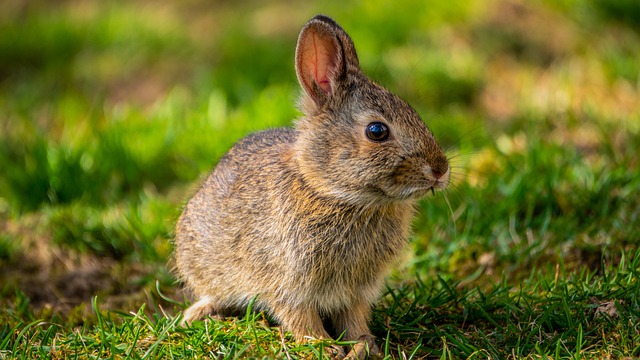
Rabbits are small and cute animals that serve as some of the best pets. This is because they do not require much attention like dogs and cats. Besides that, they don't take up much space in your home. Not only that, but rabbits do not require a high amount of food every day.
Contents
So overall, keeping a rabbit is reasonable and allows you to have a companion. While these animals may not bark or meow like other pets, they do communicate with you. You can understand a rabbit's emotion by learning more about its ear positions.
If you want to know everything about your rabbit’s ear positions, you’re in the right place. We know all about this tiny but cute animal and will be guiding you today. So without any further ado, let’s dive into the rabbit world.
The Two Uses Of Rabbit Ears
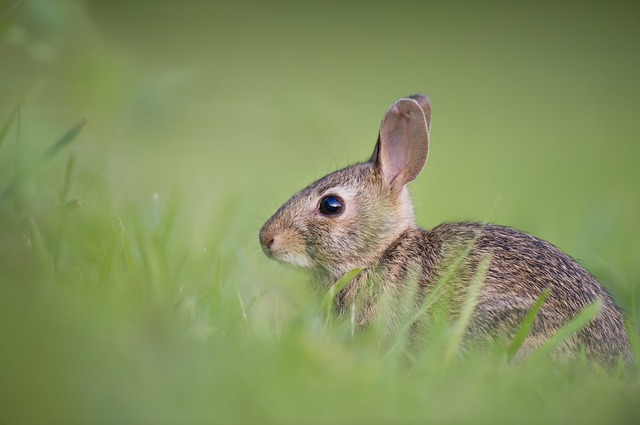
Before we dive into the specifics of rabbit ear positions, you must understand how this animal use this body part. This will allow you to comprehend a rabbit's language better. Here are the two primary uses you must be aware of:
Functional
Of course, like all other living beings, rabbits also use their ears to function well through hearing. The pointy and long design allows them to listen to sounds from a far distance. This is one of the reasons why you may have heard that rabbits have excellent hearing.
Typically, rabbits twist their ears in various positions to maximize the benefits of their hearing. This allows them to tune into different sounds with ease. So they can listen from different distances by changing their ear positions.
Emotional
A rabbit has excellent hearing, so its ears respond to sounds differently. This enables the tiny animal to display its emotions subtly and effortlessly. For instance, if the rabbit detects danger, it may flick its ears consistently to locate the threat's position.
Similarly, the ear position will change depending on your pet's state of mind. You can learn about what the animal is searching for, its feelings about you, and much more by the ear positions.
Rabbit Ear Positions: Everything You Need To Know
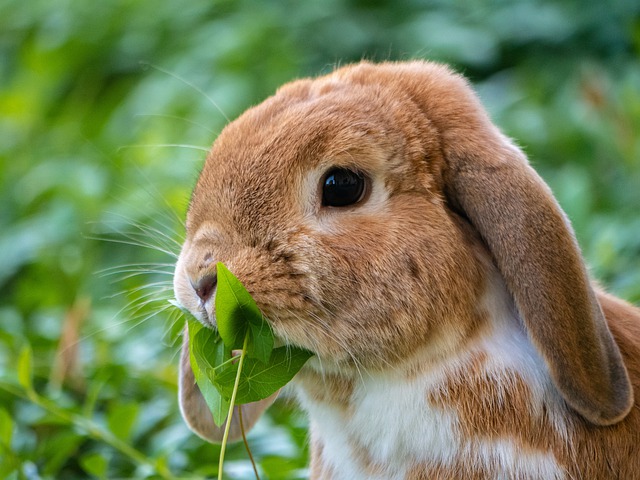
Here is everything you need to know about your rabbit ear positions:
Outward/Upward Ears
Have you ever observed your rabbit’s ears being close and pointing outwards? If so, you have experienced your pet being happy and enjoying a relaxing day. This position means that the animal is confident in its surroundings and does not have any worries.
You may also observe your rabbit lying on its favorite spot during this position. Additionally, you may see the animal with its paws sticking out. Sometimes, they also curl up like cats when feeling relaxed.
Twitching And Upright Ears
A startled rabbit in its environment always has upright ears with some twitching. You may also find them to be rigid and alert at times. When the ears move a bit, you can understand that your pet is interested in something.
Meanwhile, the upright position indicates that the rabbit is intently listening to or for a sound. If the ears are in this position for a time, you should know that your animal has located a noise. And now it is tuning in to get a clear hearing.
When the ears are no longer upright, you can stay calm as the rabbit is not interested in the sound. This means that it is not detecting a danger nearby. Another thing to note is that your pet may be trying to warn you of something. For instance, a threat is nearby if the rabbit is on its hind legs while listening. Additionally, if the animal is lying down but continuously twitching, it wants you to listen for the noise too.
Slanted And Forward Ears
This position is similar to the earlier one but has a significant difference. Slanted and forward ears display that your pet is curious about something new in its habitat. This may also happen when you gift your rabbit a new toy to play with.
Another key thing about this ear position is that it does not mean your rabbit is scared. So you should not be worried about a lurking danger. The primary thing that this position indicates is that your rabbit is being careful.
Sometimes, the pet also starts sniffing, which may seem like shivering to you. Besides that, when the animal finds a strange thing, it will slow down. Then, your pet will try to sneak up on the alien toy, which is when you should keep your guard up.
One Up And One Down
Have you ever seen your rabbit with its one ear up and the other one down? If so, it means you have observed your pet half-listening to something. This usually happens when the animal finds interesting sounds in its habitat.
Of course, not all sounds pique the same interest, which is why the animal only listens with one ear. This position is officially called a half-lop to signify that only a single ear is up.
In this position, your rabbit may also provide you attention. However, keep in mind that you will have to be more interesting than the sound your pet is listening to.
Slanted And Backward Ears
When we are displeased by something, we portray the emotion through our faces. Similarly, your pet rabbit does it by slanting its ears in a backward position. The animal often does this when another rabbit is sharing their meal.
Apart from that, rabbits also use this position when a human scares them. You should remember that the pet can turn aggressive within a few seconds in this position.
Another sign of displeasure is when your rabbit's tail is upright. Besides that, if you see your pet lifting its chin in an outward position, you must get alert. This is because the rabbit is planning to bite the person scaring it.
Flat And Wide Ears
Wide and flattened ears only signify one specific thing: your rabbit is fearful. By putting themselves in this position, the animals aim to appear smaller. This allows them to evade the eyes of a nearby predator with more ease.
You may think that position is useless for hiding from predators. However, you’re mistaken. Tucking away the large ears is helpful and significantly reduces the size of your pet. Besides that, you may also observe other signs that indicate your rabbit is scared.
For instance, the rabbit may be crouching on the floor or trying to be still. You should watch out for your pet during this position carefully. This is because extended exposure to fear can lead to death.
Along The Back But Together
When your rabbit's ears are along its back, but together, it means that the animal wants to rest. This occasionally happens after your pet has had an active day. The position indicates that your rabbit wants to be alone and gather energy.
If you have never seen this position, you should not worry. Instead, wait until your rabbit lies down for a nap. In most cases, you will find their ears precisely in this position. It is best not to engage or pet your companion when its ears are along the back and together.
Along The Back But Apart
This is a different position which you should not confuse with the earlier entry. Along the back but apart position indicates that your pet is displeased or angry. Additionally, the ears will be a bit stiff in this case to alert you to the feeling.
Typically, you should let your rabbit be alone when in this position. This is because they may be tired of your constant petting. Sometimes, the animal also uses this position when it does not like you being its territory.
Another sign that your rabbit may do simultaneously is grunting. Once you hear the rabbit sounds, it's time to back off. After some time, the pet will calm down and come near you when it's comfortable.
However, if you disregard this ear position and the grunting sign, be prepared for a bite. Rabbits may be friendly usually but not when they are distressed.
Shaking Ears
Does your rabbit shake its ears at times and move them in a sideway position? Well, this may be because of a variety of reasons. That is why you should pay attention to such behavior.
When a rabbit shakes its ears continuously in a row, it feels itchy. This may be because of dust and the environment. However, you should take your pet to the vet if the issue is persistent. This is because the problem may be medical such as an infection.
Another reason behind this position may be that your rabbits want to be alone. Typically, this happens when the pet is not in an interactive mood. So you may see it shaking its ear when a human is approaching.
The final reason that your pet may shake its ears is when it's happy or feeling excited. The rabbit also performs another move called the mini binky in such a case. Your pet jumps while twisting its body to show happiness.
The Default Rabbit Ear Positions
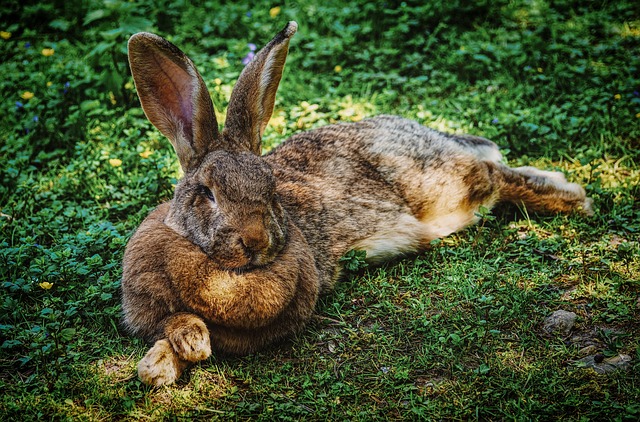
The earlier mentioned positions are the primary emotion displaying positions. However, not all rabbits show their feelings the same way. For instance, your pet may have upright ears, which may alert you.
However, keep in mind that some rabbits have erect ears in their normal state of mind. This depends on the behavior of your breed. So here are some default positions that will help you understand your pet better:
Erect
This is the prevalent ear position that is found in most rabbits. Your pets use this position to hear sound thoroughly. It also allows the animal to be more responsive.
Lop Ears
Lop ears are those that are droopy naturally and bounce when your rabbit hops around. Typically, you will find this feature in animals of the lop breed. They have floppy ears because of a genetic mutation that causes this body part to be two times larger than the standard size.
Rabbits lop-eared have the same meanings for the earlier mentioned positions. However, it may be tough to identify a position in the lop breed because of droopiness. A key thing to keep in mind is that their ears hang very low when alert. Besides that, a lop rabbit has its ears closer to the spine when it's angry. So you should carefully watch your pet if it’s from this breed. Otherwise, you may miss concerning signs and positions.
Half Lop Ears
Half lop rabbits have one erect ear while the other sags downwards. This is why you may observe a diagonal line in such pets. Keeping this in mind will help you quickly determine the half listening position.
Sudden Droopy Ear Position
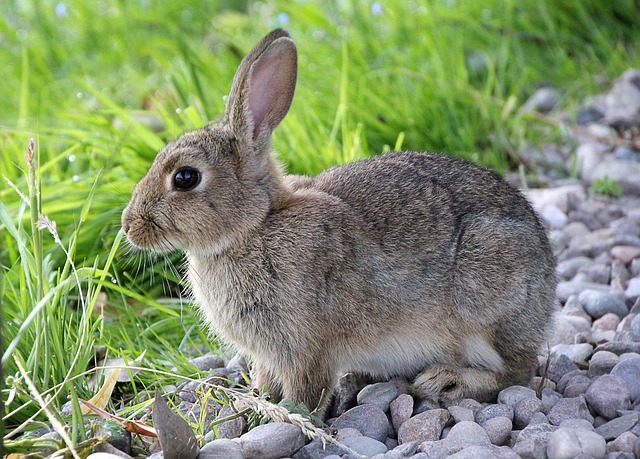
Do you have a rabbit that has erect ears normally but now they are droopy? If so, you should not neglect this position as it is concerning. Such sudden changes happen during two stages of a rabbit’s life. The first case is that your pet suffers from an infection affecting its ears. This is why they are drooping and can lead to much harm. So you should immediately take your companion to a vet. The physician will find the cause and prescribe proper medication.
Secondly, your rabbit's ear may be droopy because of overheating. You can determine this by looking for other signs, such as slow movement and convulsions. Additionally, this happens frequently in the Giant Flemish rabbit breed. You can tackle the issue by moving your pet to a cool area and giving it water.
Final Words
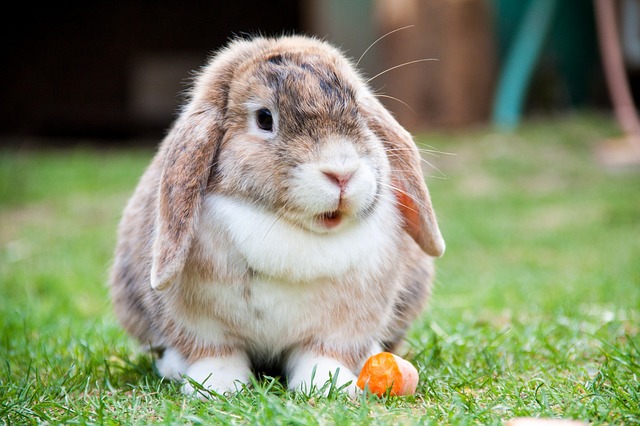
This is everything you need to know about your rabbit ear positions. Understanding and watching these movements will help you in keeping your pet happy. For instance, you can respect their boundaries by leaving them alone during the along the back but apart position.
The different positions will also help you protect your rabbit from surrounding dangers. You can use their ears to take precautions and save them from a threat such as a predator.





